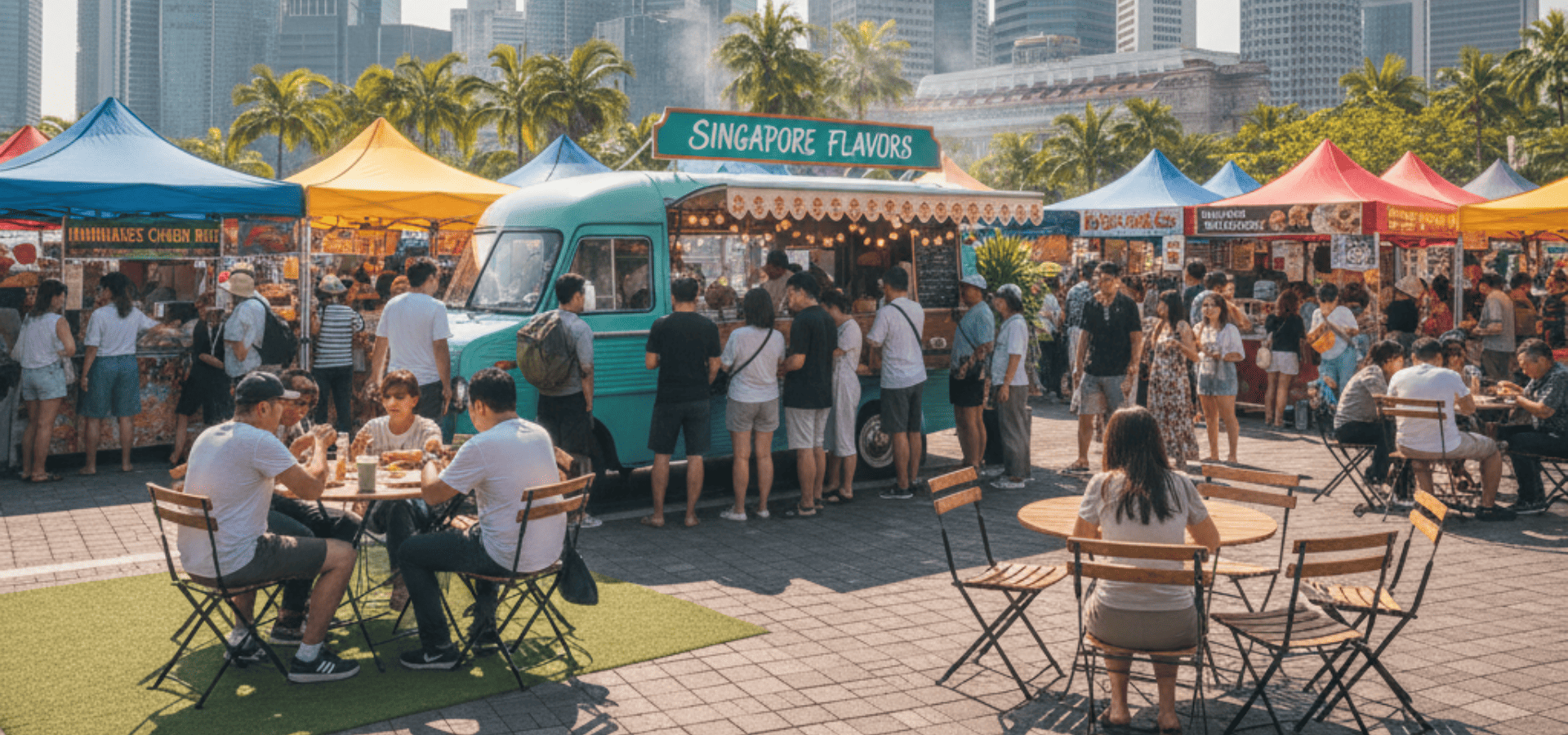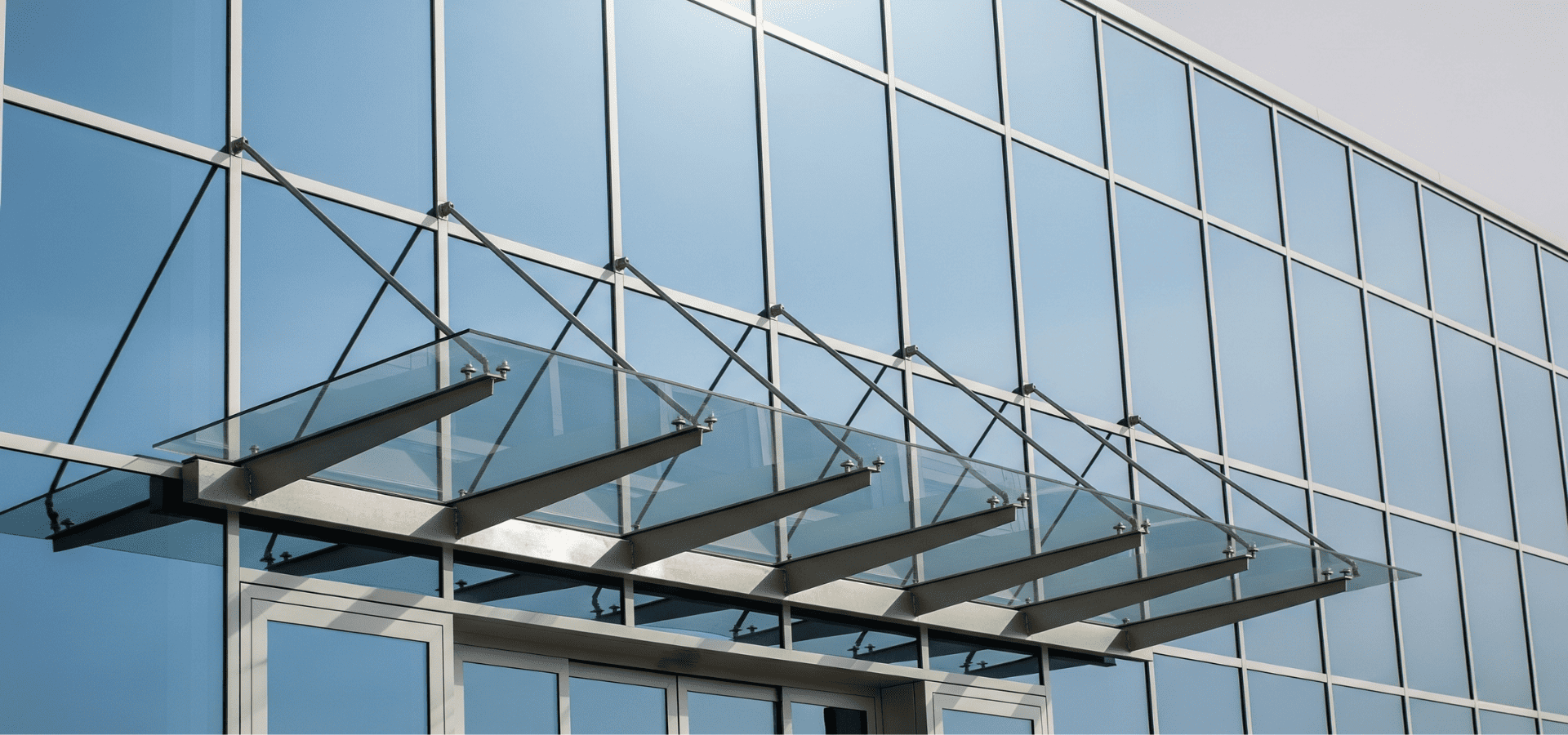Awnings For Food Trucks & Mobile Kitchens In Singapore
There’s nothing glamorous about sweating over a hot grill while the noonday sun bakes down on your metal roof. Ask anyone who’s worked a food truck in Singapore: shade and airflow are survival tools, not luxuries.
That’s where awnings come in. They’re not just decorative frills for your wagon; they’re working gear, as essential as your gas tanks or your prep bench.
In the mobile food world, space is money, and comfort is oxygen. The right awning can mean the difference between a queue that lingers and a customer who decides that while nasi lemak is delicious, it might not be worth ten minutes of lining up in direct sunlight. Your staff don’t keel over from heatstroke by the lunch rush either.
Shade sells, literally. Sometimes, it's the only thing that keeps service rolling.
But awnings for food trucks are not quite the same beast as the ones bolted onto homes or cafés. They need to move, fold, fit regulations, and survive the uniquely tropical climate Singapore dishes out. This guide breaks down what matters and how to choose the right one, so you can focus on what matters…
Keeping your customers happy and full.
Why Food Trucks Need Awnings More Than Ever
Mobile kitchens in Singapore don’t operate in air-conditioned malls. They’re in carparks, event spaces, park connectors, industrial estates during lunch — basically, anywhere a hungry crowd can gather. Shade is a crucial component of this setup, as essential as even the gas hookup.
For customers, nobody enjoys queuing in a hot pocket. A well-angled awning creates a small comfort zone where people can stand and wait without frying. That alone can boost your dwell time and sales significantly, similarly offering protection against the rain too.
For staff, it’s a serious climate upgrade too. Hot oil and direct sun are a bad combination; awnings reduce heat stress and keep the prep space tolerable. They can be the deciding factor between powering through a lunch rush or burning out mid-shift.
Lastly, for gear, heat and rain are rough on equipment too. A canopy protects POS systems, fridges, and even your signage from weather damage, buying you time and ultimately saving you money from wear and tear.
In Singapore, where a sudden downpour can drench your stall in thirty seconds flat, having an awning ready to swing out is practically survival gear.
The Singapore Context: Heat, Rain, And Rules

However, before diving into materials and mechanisms, let’s take it one step deeper and talk local reality:
- Climate: Singapore lives in extremes — blazing midday heat followed by thunderstorms that empty the sky in minutes. Your awning needs to withstand both without sagging or snapping. If it can’t stand up to a monsoon squall, then it’s not fit for the job.
- Urban environment: Space is tight in the Garden City too. Many food trucks park at events or hawker-style clusters with trucks side by side. You can’t install something that sprawls like a café terrace. You need a shade that’s compact, tidy, and considerate of neighbours.
- Regulations: The National Environment Agency (NEA) and event organisers often set rules for food truck setups. Overhanging structures must be safe, fire-retardant, and not block walkways, which pretty much excludes all tarp-based DIY solutions. You need a professional installation.
- Aesthetics: Singaporeans have a reputation for being picky about presentation. A neat awning signals professionalism; a saggy canvas screams “back alley.” Customers do judge, and sometimes that first impression is the only one you get.
Types Of Awnings For Food Trucks
Not every awning suits a mobile kitchen. With so many types of awnings on the market, it’s key to know which one suits your needs.
Here are the main players you’ll see adapted for trucks in Singapore:
Retractable Arm Awnings
These are the classic café-style canopies, folding out with articulated arms. Motorised versions exist, but for trucks, manual cranks are actually more common. They’re quick to deploy and tuck neatly against the vehicle.
The pros of this awning type include the professional look, decent projection capabilities, and adjustable shading. However, if you’re not quick on your retraction, they’re also vulnerable to sudden gusts, and the arms take up space while needing secure mounting points. It’s best to measure and plan your installation before you commit to a purchase.
Drop-Down Vertical Awnings
These roll straight down from the truck roof like a shade screen. They’re brilliant for blocking low sun or creating a bit of privacy.
Drop-down vertical awnings are compact, easy to operate, and excellent for side or rear serving. However, their methodology gives limited shade depth with very little horizontal cover. Overall, this option works best in synergy with other awning types rather than as the sole source of shade.
Canopy-Style Extensions
Think fabric stretched over poles or lightweight frames fixed to the truck’s side. While technically an awning, these products often look more like pop-up tents integrated into the vehicle.
They’re wider in coverage, flexible in design, and great for events with seating. But they also take longer to set up and can be hard to stabilise in strong winds. That’s why many food truck owners in Singapore resort to…
Hybrid & Custom Builds
Going bespoke, i.e., a combination of retractables and fixed canopy elements. A hybrid solution means more overhead, but it also generally results in a solution that’s much more robust and versatile.
A hybrid case might, for example, involve a small retractable for daily use, plus bolt-on extensions for festival setups. So basically, if your setup shifts weekly, flexibility like this can make all the difference.
Fabric And Materials That Survive Singapore

Furthermore, the fabric choice matters just about as much as the awning type. You’re not shading a backyard; you’re protecting a microbusiness in brutal weather.
Here are some common materials you see employed on food truck awnings in Singapore:
- Acrylic canvas: Popular for its durability and colourfastness. Acrylic provides great UV resistance and is less likely to fade in the sun.
- PVC-coated polyester: Waterproof, easy to clean, and often fire-retardant, PVC-coated polyester is slightly heavier than fabric but also stands up more effectively against tropical storms.
- Mesh fabrics: This option is mainly useful for drop-down shades, cutting glare while still allowing airflow and a dash of visibility.
- Material colour: darker shades absorb heat but hide stains, while lighter shades reflect heat but show dirt. This is another important but sometimes overlooked decision to make.
Ultimately, in Singapore’s humidity, mildew is the real enemy. Choose fabrics with anti-fungal treatment if you don’t want green spots creeping in within six months. And regardless of what you choose, maintenance will be what truly impacts your installation’s lifespan.
Safety and Stability: Don’t Skimp
Next comes safety. Awnings for food trucks are load-bearing structures attached to moving vehicles. That’s why they must be treated seriously, and not like some casual beach umbrella.
Here are the safety factors to consider, for your health, your staff’s, your business’s, and the two dozen permits tied to it:
- Wind: Even a small gust funnelling between trucks can whip up enough force to strain an extended canopy. Always retract if winds pick up.
- Anchoring: Trucks don’t have brick walls, so your installer needs to reinforce mounting points with steel brackets or subframes. A loose fixing can become a flying hazard — or a PR disaster in the worst-case scenarios.
- Slope: Always angle the awning for water runoff. A flat canopy in Singapore equals one heavy water balloon waiting to burst.
- Fire rating: Many events require fire-rated fabrics. Fire safety-rated awnings are a whole rabbit hole, but check all certifications before investing. And if it’s not labelled, don’t risk it.
The Customer Experience Angle

We’ve talked about safety and practicality… But what about the hidden value of an awning for a food truck or mobile kitchen business?
Shade isn’t just comfort; it’s branding. A well-chosen awning doubles as a welcome sign, a billboard, and a permanent advertisement all in one.
So ensure your awning has these:
- Printed graphics: Include your stall name, logo, or even a stylised food image on the canopy to make your truck stand out in a row of twenty. It’s the roofline version of a good pitch.
- Lighting integration: LED strips along the frame make evening operations inviting without clutter. And as a bonus, they light up your menu.
- Colour psychology: Bright reds and yellows catch attention (and appetite), while cooler shades can make a queue feel calmer in the heat. If everything from big tech to global fast food chains invests in colour psychology, so should you.
Food trucks thrive on first impressions. An awning that looks intentional and inviting can be as important as a menu board that does the same. People eat with their eyes, before they even see their food.
Practical Considerations For Truck Owners
Let’s wrap up with a quick rundown of what truck owners should consider before buying an awning. We’ve covered the theory, but if you want the no-nonsense shortlist so you can get back to serving up sensational dishes, this is it.
Storage And Weight
Every kilo matters when it comes to an awning. A heavy awning eats into payload and fuel efficiency, but going too lightweight is the equivalent of installing a kite on your truck.
Retractable awnings are usually the most compact in this category, offering weight but in a manageable format. Meanwhile, custom canopy frames can add serious bulk. Know your limits.
Setup Speed
When you roll up to a lunchtime crowd, you don’t want to deal with a 20-minute rigging session. Prioritise awnings that deploy quickly, and also similarly retract without fuss should bad weather roll in quickly.
Your prep window is tight: your awning setup should be tighter.
Cleaning And Care
Singapore’s mix of dust, bird droppings, and monsoon rain will stain fabrics fast. Wash down your awning weekly, let it dry before retracting, and treat mould at the first sign.
Once damage sets in on an awning, it’s hard to reverse it. So when buying one, consider if it’s relatively versatile and easy to maintain.
Repairability
Choose systems with parts that can be swapped or repaired locally. For this, it can be much easier to find a local manufacturer or at least a popular European brand used widely in Singapore, with plenty of aftermarket parts available.
Awnings aren’t much use if you have to wait six weeks for a replacement arm to ship in. Sometimes, spending less on a budget brand nobody has ever heard of hurts you more in the long run.
Cost And Value
Finally, run some numbers. Ballparking it, a basic manual retractable awning for a truck might run from S$1,200 to S$2,500, depending on size and material. Custom builds or hybrid systems can easily hit S$5,000+, especially if branded graphics and lighting are involved.
Weigh up the costs and your budget internally, but then also comparatively to the perceived value of the asset. An awning costs, definitely, but one extra queue of customers per lunch rush per day covers that cost a lot faster than you’d think.
Final Thoughts: Build It And They Will Come
Take a stroll at Artbox Singapore or Geylang Serai bazaar, and you’ll spot the difference instantly. The polished trucks (the ones with long queues) nearly always have a neat awning setup — shade, a visible menu under cover, maybe even a little sheltered standing area.
But the trucks without? Customers hesitate. The sun is punishing, and rainstorms turn open setups into chaos. No one wants laksa with a side of sweat and soggy menus.
That’s why I always say, if you’re worried about the costs or the return, build it and they will come.
Food trucks in Singapore run on hustle, heat, and hospitality. An awning may not seem as exciting as a new fryer or a micro-viral signature laksa recipe. But it’s one of those silent essentials that make the whole operation smoother — keeping customers comfortable, staff sane, and gear protected.
You don’t always notice the change when you add it, but you notice the detriment without it. An awning done right is not just a cover: it’s your storefront, your comfort zone, and, sometimes, the reason a customer chooses you over the next stall.
So build it and they will come. Don’t plan to install an awning after a certain target of customers and revenue. Install one now, invest in your business, and the returns will grow from that.
Your truck deserves it. And so do your customers.


